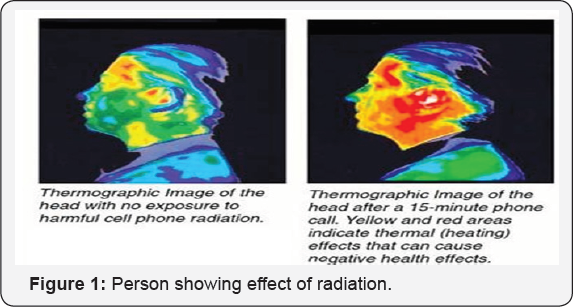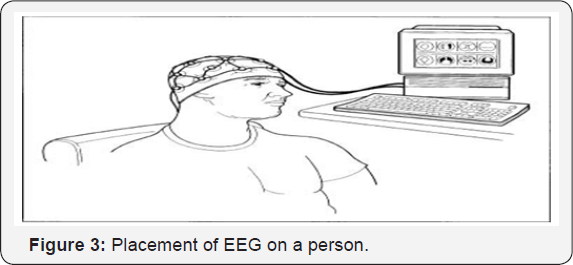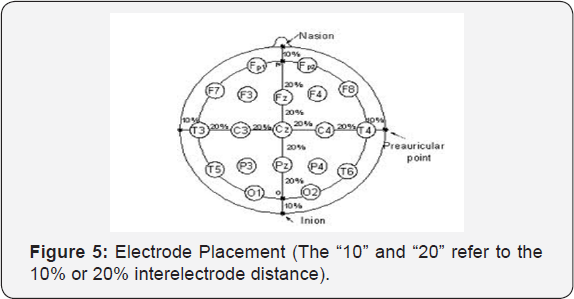Effect of Mobile Phone Radiation on Human Brain
Shubham1* and Supriya Goel2
1Department of Instrumentation and Control Engineering, Netaji Subhas Institute of Technology, Ind
2Department of Electronics and Communication Engineering, Deenbandhu Chhotu Ram University of Science and Technology, India
Submission: July 13, 2017; Published: July 31, 2017
*Corresponding author: Shubham, Department of Instrumentation and Control Engineering, Netaji Subhas Institute of Technology, New Delhi, India, Email: Shubhgoel96@gmail.com
How to cite this article: Shubham, Supriya G. Effect of Mobile Phone Radiation on Human Brain. Adv Biotech & Micro. 2017; 5(1): 555655. DOI: 10.19080/AIBM.2017.05.555655
Abstract
The Wireless communication is experiencing a dynamic growth in the global scale and the cell phones are becoming a vital device in the global modern society. Cell phones radiate radio frequency waves, a form of non-ionizing radiation, which can be absorbed by tissues closest to where the phone is kept [1]. This paper presents various factors on which radiations emitted from a cell phone effects a human brain and various safety measures to prevent this.
Introduction

New technologies are evolving day to day life to facilitate human being. Mobile communication is currently the fastest growing communication system in the telecommunication industry. Due to the increased number of users using the mobile phone, the concern is now focused towards electromagnetic radiations emitted by the mobile phones itself. Electromagnetic radiation can be classified into ionizing and non-ionizing radiation. Ionizing radiation is the radiation with high energy which is able to remove tight bonds between electrons and atoms resulting in tissue damage while non-ionizing radiation is the radiation that has enough energy to vibrate the atoms and molecule but do not remove the electrons in the molecule [2]. This radiation mainly occurs at low frequency range. Mobile phone is designed with low power transceiver to transmit voice and data to base station is located at few kilometres. These radiations cause problems like headaches, severe pain in ear, blurring of vision, memory loss, itching, burning sensations, feeling asleep, hypersensitivity exhaustion [1] have been observed when using mobile phone. Researchers have found that these symptoms are more common in people with higher exposure to radiation of mobile phone (Figure 1).
Overview
Various factors on which radiations emitted from a cell phone effects a human brain
Distance of Cell phone from human body: If a cell phone move even an inch from the body, it can greatly reduce radiation exposure. Strength of the signals decreases as the square of the distance from the source. This means that if we double the distance from the source, which is like cell phone to our head, the signal strength would be four times less, as square of two is four. If we increase 10 times the distance between the cell phone and our head, the signal strength will be 100 times less, and similarly at 100 times the distance, signal strength becomes10,000 times less.
Distance from the cell phone tower: Different Cell sites emits different amount of radiation. With the help of a suitable meter we can measure how much radiation is received at a particular spot. Around a single tower, radiation may not be uniform. The energy from a cellular phone tower antenna, like that of other telecommunication antennas, is directed toward horizon (parallel to the ground), with some downward scatter. Cell phones communicate with nearby cell tower mainly through radiofrequency (RF) waves, a form of energy in the electromagnetic spectrum between FM radio waves and microwaves. Like FM radio waves, microwaves, visible light, and heat, they are forms of non-ionizing radiation. This means they cannot cause cancer by directly damaging DNA. When a person makes a cell phone call, a signal is sent from the phone's antenna to the nearest base station antenna. The base station responds to this signal by assigning it an available radiofrequency channel. RF waves transfer the voice information to the base station. The voice signals are then sent to a switching center, which transfers the call to its destination. Voice signals are then relayed back and forth during the call, so effects human brain.
SAR (Specific Absorption Rate): S.A.R. is the measurement of rate by which a body absorbs energy when the body is exposed to radio frequency electromagnetic field. We can also say that it is a measure of absorption of EM wave energy by tissues. It defined as power absorbed per mass of tissue and has unit's watts/ kilogram. Absorption rate is observed either for whole body or for a small sample volume of tissues [3]. According to ICNIRP guidelines. For limiting exposure to time varying electric, magnetic and electromagnetic fields, the maximum SAR value for mobile phones has been set at 2 Watts/Kg localised for the head and the trunk (of a human) in the frequency range of 10MHz to 10GHz These guidelines have been developed in collaboration with Environment Health Division of the World Health Organisation (WHO). In India, the FCC limit for public exposure is 1.6 W/kg for 1 gram volume averaged SAR [4].
Extent of conversation: It has also a large impact on human brain,it is proved that if a person talks more than 50 minutes on cellphone, they found a 7 percent increase in brain metabolism in the region closest to cellphone antenna when the phone was on, as a result of it temperature of body increases.
Age of the person: As compare to adults, children have large effect on their brain while talking on the cellphone because children are growing more rapidly, they are more cell dividing capability, so that radiations disrupts more no. of cells. Also, children have thinner skull as compare to adults so they have larger impact [5]. It is also proved that foetuses are higher sensitive to radiations than others (Figure 2).

Technology on which phone works: Analyses show that mobile radiations effect human brain and GSM operated mobile phone has higher effect on Brain activity as compared to CDMA operated mobile phones (Table 1).

Methodology
A. EEG: An electroencephalogram (EEG) is a check that measures and records the electrical activity of the brain or we can say that it is a test used to detect abnormalities related to electrical movement of the brain. This procedure track and records brain wave pattern. Little metal discs with electrodes are placed on the scalp, and then send these accumulated signals to the computer for recording the results. Normally l electrical activity in the brain makes an identifiable pattern. With the help of EEG, doctors look for abnormal patterns that indicate seizure and any other problems [6].
An electroencephalogram (EEG) has done to
A. For Diagnosing epilepsy and to see the type of seizures occurring.
B. It checks the problems associated with unconsciousness.
C. It helps to find out a person’s chance of recovery after a change in consciousness.
D. It finds out if a person who is in a coma is having dead brain.
E. It studies sleep disorders which are known as narcolepsy.
F. It watches the brain activity while a person is receiving general anaesthesia during brain surgery.
G. It helps in finding out if a person has a physical problem (problems in the brain, spinal cord, or nervous system) or a mental health problem (Figure 3).

The brain patterns which we obtained from EEG form wave shapes that are commonly sinusoidal are divided into five basic groups:
A. Beta (>13Hz)
B. Alpha (8-13Hz)
C. Theta (4-8Hz)
D. Delta (0.5-4Hz)
E. Gamma (30-100Hz)
A. Delta is the waves having a frequency range up to 4Hz.These waves are highest in amplitude and slowest. They are seen normally in adults during sleep and in babies. These are typically most prominent frontally in adults and posteriorly in babies.
B. Theta is the waves having a frequency range from 4Hz to 7Hz. Theta waves are generally seen in young people. They may be seen in drowsiness or arousal in older children and adults or can also be in meditation. Excess theta for age represents abnormal activity.
C. Alpha is the waves having a frequency range from 8Hz to 12Hz. This activity is seen in the posterior regions of the head on both sides, having a higher amplitude on the dominant side.
D. Beta is the waves having a frequency range from 12Hz to about 30Hz. They are usually seen on both sides in symmetrical distribution and is most evident frontally. Beta activity is closely associated to busy or anxious thinking and active concentration. It is the dominant wave in patients who are alert or anxious or who have their eyes open.
E. Gamma is the waves having frequency range 30-100Hz. Gamma rhythms are representing short-term memory toning of recognizable objects, sounds, tactile sensations (Figure 4).

RMS 32 Channel software
We use Polysomnography Hardware System RMS -32 with 32 channels is used for simultaneous data acquisition. RMS-32 is a very useful hardware system which is used to acquire the signal by surface electrodes [7]. The software used is SUPERSEC which consists of two parts Acquire and Analysis (Figure 5).

Analysis
After the acquisition of EEG signal, different DSP techniques like digital filter processing, fast Fourier transform, autocorrelation, cross correlation is used to process the EEG signal.
Future Work
From the above study, it is desired to work on the Effect of Electromagnetic Radiation on Human Health employing the available two mobile phone technologies in the Country viz. GSM 2G and 3G using EEG and Matlab. The work on this is being carried out in the laboratory with a number of subjects and using the above mentioned mobile communication technologies using different type of modulation, emitted power and operating frequency. Response of human brain is being studied under three conditions: when no phone is used, when a GSM 2G phone is used and while using a GSM 3G phone. The characteristics of brain signals so obtained would help to determine which type of communication technology is more suitable for human being in concern with human health. Results obtained will help designing a class of communication devices which have minimal effect on human health.
Safety Measures
A. There should be some law in every country for hearing on public health threat by exposure to transmitted radio frequency radiation [8].
B. Radiation emitting devices should require some health testing prior to approval.
C. Continuously transmitted devices should be banned.
D. There should be some warning label on the cell phones and cordless phones.
E. While talking on cellphone, keep phone at speaker mode, with phone a hand's away or use a wired handset. Moreover, use a Bluetooth emitter, as it will decrease levels of microwave radiations [8].
F. Turn off handset when not in use.
G. Try to use phone when having full signal strength, when signal strength is poor it emits high amount of radiation.
H. Don't use Cell Phones in elevators, cars and in planes because it emits more radiation in enclosed metal spaces.
I. Do texting instead of call, as phone is farther from body it becomes safer.
J. When at home, use wired landline as it emits less amount of radiation.
References
- Aruna Tyagi, Manoj Duhan, Dinesh Bhatia (2011) Effect of Mobile Phone Radiation on Brain Activity GSM Vs CDMA. IJSTM.
- Robert Leeb, Felix Lee, Claudia Keinrath, Reinhold Scherer, Horst Bisch, et al. (2007) Brain-Compute Communication: Motivation, Aim, and Impact of Exploring a Virtual Apartment Ieee Transactions On Neural Systems And Rehabilitation Engineering 15(4): 473-82.
- Scarella O Clatz, Lanteri S, Beaume G, Oudot S, Piperno S, et al. (2006) Realistic numerical modeling of human head tissue exposure to electromagnetic waves from cellular phones.
- Aruna Tyagi, Vaishali Jain, Dinesh Bhatia, Manoj Duhan (2010) Review of Effect of Electromagnetic Radiations of Mobile Phone on Human Health Proceeding of Control Instrumentation System Conference.
- Riadh W Y Habash (2011) Non-Invasive microwave hyperthermia PhD Thesis, ECE Deptt, IISc, Bangalore, India.
- Vijay Kr Garg (2000) IS-95 CDMA and cdma: Cellular/pcs system implementation.
- Delgado JM, Leal J, Monteagudo JL, Gracia MG (1982) Embryological changes induced by weak, extremely low frequency electromagnetic fields. Journal of Anatomy 134(3): 533-551.
- Wikipedia. Mobile Phone [Online].






























